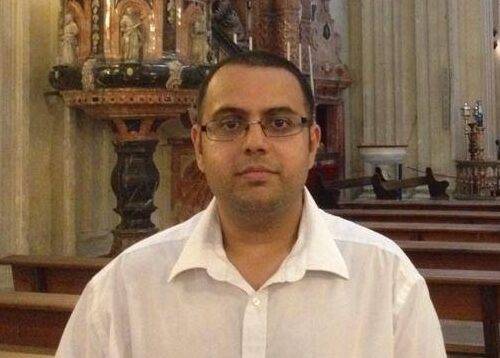The Ottoman Scientific Heritage is a three-volume tour de force that will prove to be a key reference point for historians of science and Ottomanists alike. Ekmeleddin Ihsanoglu, a former Secretary-General of the Organisation of Islamic Cooperation, has spent a lifetime dispelling a common trope that, after the sacking of Baghdad by the Mongols in 1258, the Islamic golden-age of science ended, and the Ottomans contributed little to nothing to the development of science. Starting his academic inquiry into science in the Ottoman Empire in the 1970s, when it was common for historians to disregard studying the history of science of the Ottomans, nobody has done more to raise awareness about Ottoman science than Ihsanoglu. In 2017, Ihsanoglu published a summation of his scholarship in Turkish, which was translated into Arabic in 2021 and, now, the three-volume delight appears in English through the studious translation work of Harvard University’s Maryam Patton. The volumes are divided up with volume I being on the formation, development and issues concerning Ottoman science, volume II and III being a compendium of notable scholars.
Ottoman Science, writes Ihsanoglu, “developed on the foundations established by the pre-Ottoman Seljuk Empire and Anatolian principalities (beyliks). During the early stages, scholars from the cultural and intellectual centres of the Islamic World, namely Egypt, Syria, Iraq, Iran and Turkestan enriched Ottoman science.” Drawing upon the classical Islamic tradition of science, governing over a diverse terrain, economic and population growth and state patronage by Mehmed II meant the Ottomans had a lot of scholarly works to draw on to build their own scientific tradition, and Istanbul became a scientific epicentre. The Ottoman Empire was also a sanctuary for Muslims and Jews fleeing Andalusia after the fall of Granada in 1492, which meant some of the West’s finest scholars ended up in the empire. Money was poured into educational establishments and networks with curriculum that included the rational sciences.
REVIEW: Inventing Laziness: The Culture of Productivity in Late Ottoman Society
The scientific scholarship was in different languages in the Ottoman Empire and the rise of Turkish as a scientific language was slow. In the 13th century, before the Ottomans were around, only 2 scientific works which can be attested to that were published in Turkish. By the 15th century, under Ottoman patronage, 88 scientific works were published in Turkish. In the 16th century, Arabic was the dominant language for scientific publications in the empire with 463 texts, while Persian produced 90. This suggests a great deal of linguistic fluidity. However, by the 19th century, Turkish emerged as the dominant scientific language with 3,294 books compared with 880 Arabic ones. “Most Ottoman scholars established first contact with Western science wrote in Turkish, and so Turkish became the first medium through which modern science was transferred to the Islamic world.”
There does remain an important issue when it comes to the late Ottoman Empire and that is its inability to match scientific production in Europe, despite the rich heritage it had to draw upon. Ihsanoglu suggests the Ottomans were not unique in this conundrum; China has a long and well-established scientific tradition but, by the 1500s, it failed to make the transition over to modern science. But even by the 16th century, the Chinese still had an advanced tradition of science when they first encountered European science, via Jesuit missionaries. There was a differing philosophy at the heart of it, in Europe, “The aim of modern astronomy is to establish a cosmology based on scientific principles. Beyond merely calculating the motions of celestial bodies, it seeks to uncover new knowledge and develop new theories.” He goes on, “By contrast, the role of astronomy in China at the time was more functional and focused, for example, on calculating the calendar and predicting lunar and solar eclipses … rather than furthering knowledge, its role was to serve the religious and political aims of the Empire.” Ihsanoglu says something similar was true for the Ottomans; he contrasts the Ottoman and China with the Russians and the Japanese. Both Russia and Japan do not have a strong scientific heritage to draw upon, unlike the Ottomans and Chinese and, paradoxically, this enabled them to adopt and synthesise modern science a lot faster and more successfully.
The Ottoman Scientific Heritage offers a comprehensive introduction to the study of Ottoman science and draws upon Persian, Arabic and Turkish, among others, to demonstrate the scope of scholarship produced. The two other volumes are a necessary resource for researchers looking for Ottoman scientists to look up; a total of 2,295 books are listed from the thirteenth-century to the twentieth-century. Subjects range from astronomy-astrology, medicine, mathematics, physics, agriculture, geology, chemistry, measurements, architecture and other sciences. The size and scope of scholars and books suggest a rich scientific tradition in the Ottoman world. As the English translator, Maryam Patton, writes, “Though these volumes are enormous already, they are but the first steps in the greater goal of encouraging even more monographs that dig deeper into the scholars and their writings,” I would add that Ekmeleddin Ihsanoglu’s achievement here compels more translations of Ottoman literature and for greater inclusivity in the way the history of science is taught in academia and even in schools. Ihsanoglu has his own insights into the development of science in the Ottoman tradition,, but it would be a shame for it to end with him. The Ottoman Scientific Heritage is a timely and much needed work that will foster dialogue, further study and debate. Students will have a key reference guide for grappling with the subject, even if they disagree with Ihsanoglu’s arguments.









